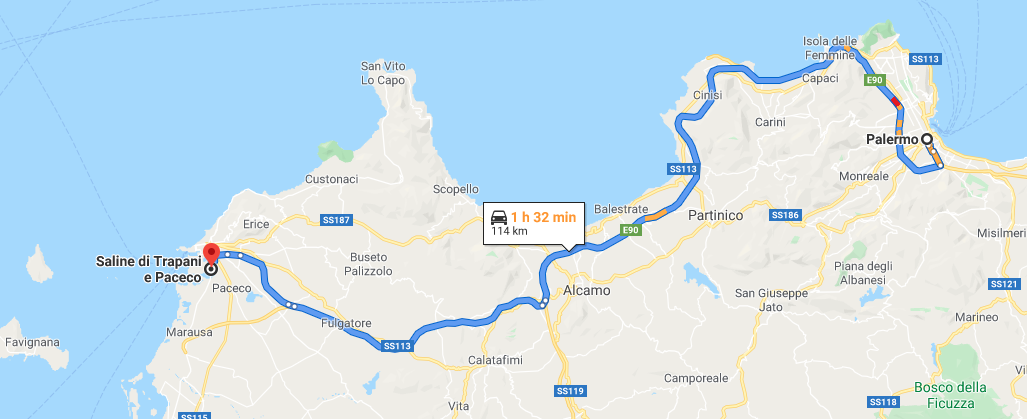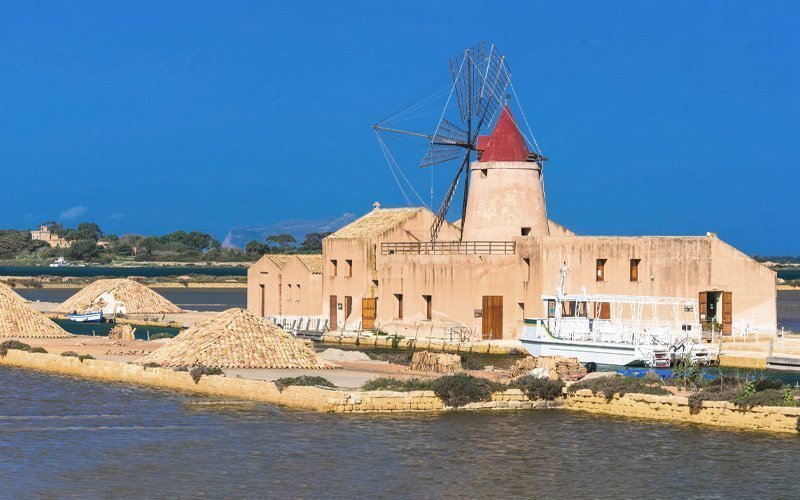Salt Pans of Trapani
Photography enthusiasts must absolutely have a postcard from the Salt Pans of Trapani.
I am Joseph and I travel the world in search of the perfect landscape! With my photographs I have made many travel enthusiasts dream and I have been on the podium several times in prestigious international competitions.
Today I’m taking you to Sicily to discover the ancient tradition of salt collection.
Salt Pans of Trapani

The first impact with the salt pans is unforgettable: huge expanses of water inside gigantic pools and heaps of salt in the shape of white pyramids; all framed by the windmills still active and the Aegadian islands in the distance in some places.
In order not to miss anything and for birdwatchers this place is special because its humid climate attracts many species of migratory birds, I have photographed flamingos in bizarre poses to say the least!
The oriented nature reserve of the Saline di Trapani and Paceco was created in 1995, entrusted to the WWF and mostly consists of privately owned salt pans, where salt is still extracted according to traditional techniques.
Rates and timetables
The visit to the salt pans is free of charge
Open all day
Where to park
Parking is easy to find around the salt pans.
Salt Pans of Trapani – From production to salt harvesting
The traditional salt harvesting has a magical taste, today I’ll tell you some passages and curiosities.
Salt production
The salt cycle begins in September, when the salt pans and the salt pans are filled with sea water and prepared for the winter “hibernation” from which they will be awakened only in March.
The production uses a complex system of filling the tanks that lasts until about mid-June and of which I have obviously forgotten the details!
For the collection of salt, instead, the salt-pan workers refer to the day of “S. Antonino”, June 13th, named after St. Anthony of Padua and depending on the season one or more harvests are made within a period ranging from 40 to 90 days from this date.
Salt collection
Until the 80’s salt harvesting was seen almost as an art and there was a specialized labourer who was employed in this activity from July to September (then he switched to harvesting, olives and garlic, thus filling the whole calendar year).
Today, unfortunately, this art has not been embraced by the new generations, so I advise you to attend the show if you travel in the summer period (soon it could fall into disuse even the manual harvesting).
A curiosity that struck me and that concerns the count of the baskets of salt. This was done when the predetermined quantity was reached and in order to avoid possible friction between those who counted and those who had collected, it was marked in a chant that the signature (the counting officer) sang aloud: the famous song of the salt miners.
SUMMARY + TIPS
The salt pans are a magical stage that you absolutely cannot miss if you are a fan of photography, birdwatching, ancient traditions or if you simply want to enjoy an aperitif at sunset with a postcard landscape.
If you travel around Trapani you might be interested in our travel guides here.
Travel moments
The best time to visit the salt pans is in summer, both for the colours of the sunset and for the presence of the mountains of harvest salt.
In the months of July and August in some spots, like Mamacaura in Marsala, you might find a lot of people and not be able to enjoy the sunset sitting at the table.
Did you like this article? Make a quote for your next car rental here or discover the other destinations that have fascinated our travelers here.
- Car used: FIAT PANDA
- Consumption: 40€ for the trip
- Km traveled: 228 (go and return from Palermo)
- Distance from nearby airports: 12 kilometers from Trapani - Birgi airport

